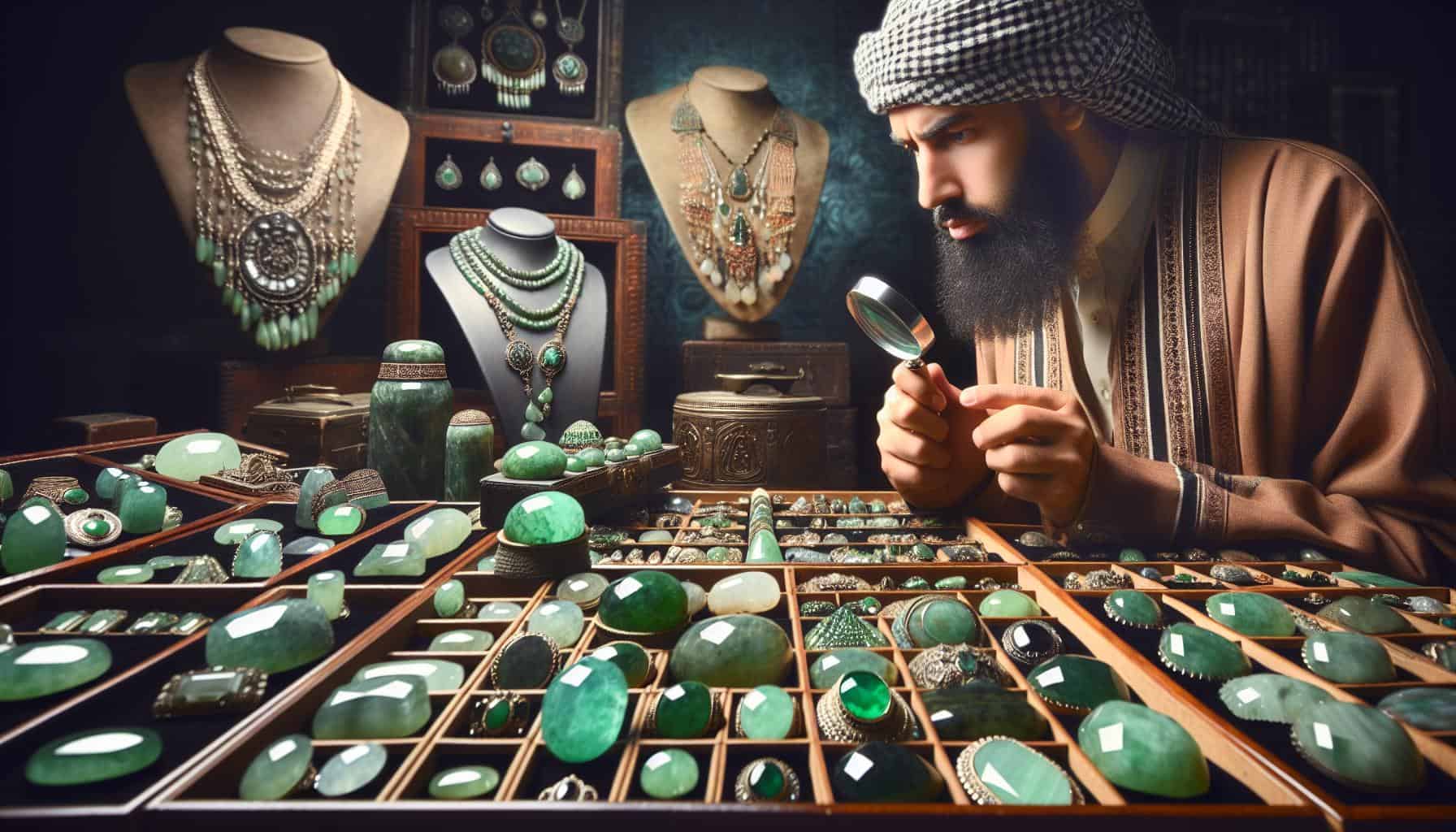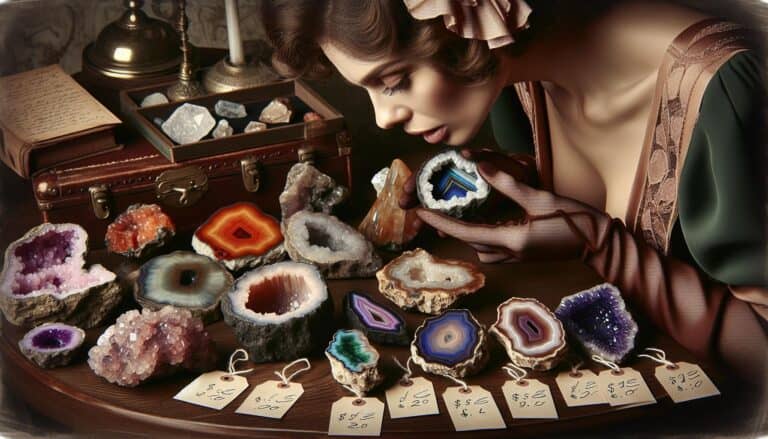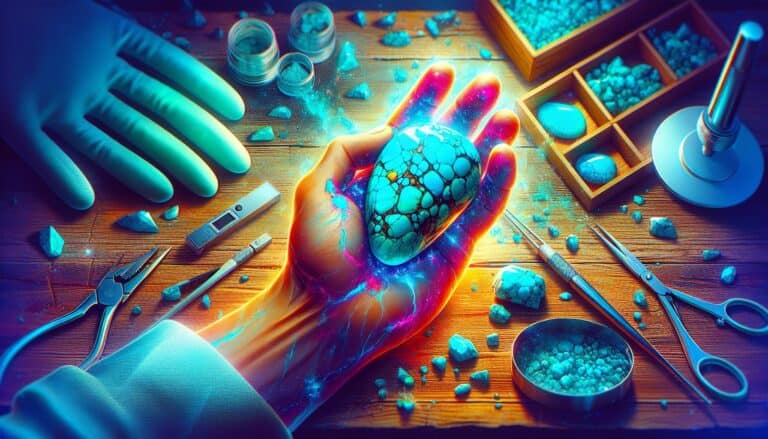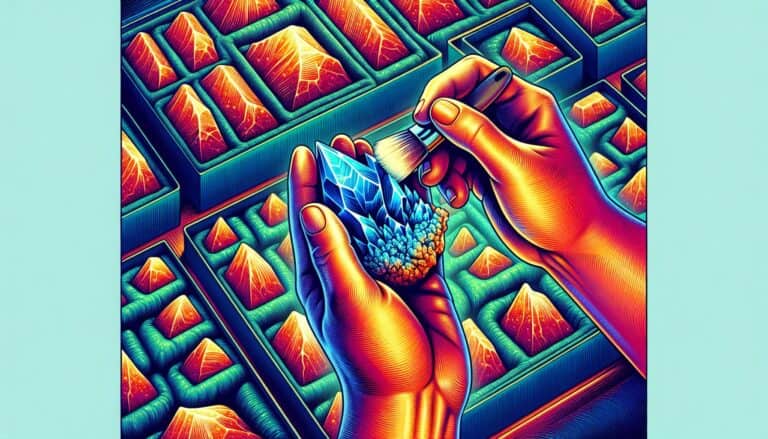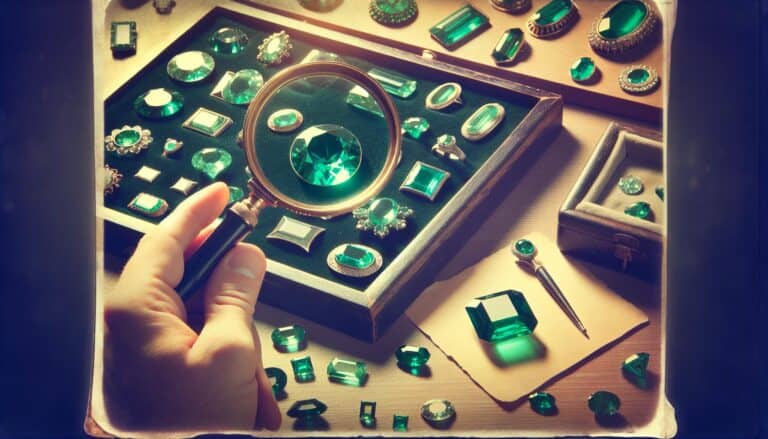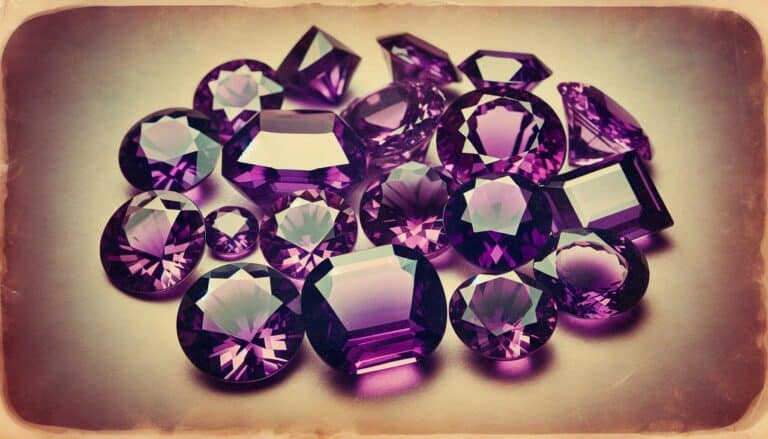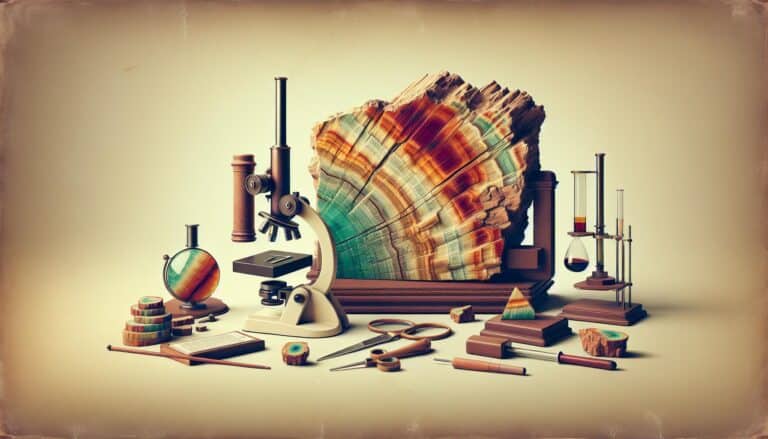Ever wondered why jade often comes with a hefty price tag?
You’re not alone. This precious stone has been coveted for centuries, symbolizing status and purity across various cultures. But what’s behind the value of jade, and why do prices vary so wildly?
Understanding jade’s worth isn’t just about admiring its cool, smooth surface. It’s about knowing the factors that dictate its price—from color and clarity to size and origin. Whether you’re a collector, investor, or simply curious, getting to grips with the worth of jade can be as intriguing as the stone itself.
Let’s dive into the world of jade and uncover the secrets that determine its value. You’ll soon see why this gemstone is more than just a pretty face.
Jade’s value hinges on color, clarity, and cut. The most prized “Imperial green” jadeite fetches high prices for its intense hue and translucency. Nephrite’s value lies in its creamy texture. Rarity, origin, especially Myanmar’s premium jadeite, and natural, untreated “Type A” jade elevate prices significantly.
What Is Jade?
When you’re exploring the worth of jade, it’s vital to understand what jade actually is. Jade refers to two different minerals: nephrite and jadeite. While both are collectively known as jade, they have distinct characteristics and qualities.
Nephrite, traditionally used in China for centuries, is a calcium magnesium silicate with a creamy, smooth texture and often comes in shades of green and white. It’s renowned for its toughness and resistance to breaking, which made it the material of choice for a multitude of utilitarian and ornamental objects throughout history.
On the other hand, jadeite is a sodium aluminum silicate that boasts a wider color range, including greens, lavenders, pinks, and blacks. Jadeite is especially prized for its vibrant “imperial green” shade, a clear, emerald-like hue that’s considered one of the most valuable in the world of jade.
Genuine jade commands a high price due to its cherished status and the reverence it holds in various cultures. To differentiate between nephrite and jadeite, experts often conduct various tests, as the two types of jade can look similar to the untrained eye.
The rarity and uniqueness of jadeite make it significantly more expensive than nephrite. The physical properties, such as density and hardness, also vary between them, which affects their applications as well as their value. Jadeite’s higher hardness on the Mohs scale enables a finer, more detailed finish in carved items, which can further enhance its value.
When assessing jade, you’ll also come across terms like “Type A,” “Type B,” and “Type C,” which refer to the treatment that the stone has undergone. Type A jade is completely natural and untreated, making it the most sought-after and valuable. Type B undergoes chemical processes to enhance its color or transparency, while Type C is dyed to improve its appearance.
Understanding these distinctions is essential when determining jade’s value. Whether you’re looking to purchase jade or just admire its beauty, knowing its origins, types, and treatments can help you appreciate this gemstone’s true worth.
Jade Prices: Factors That Affect Value
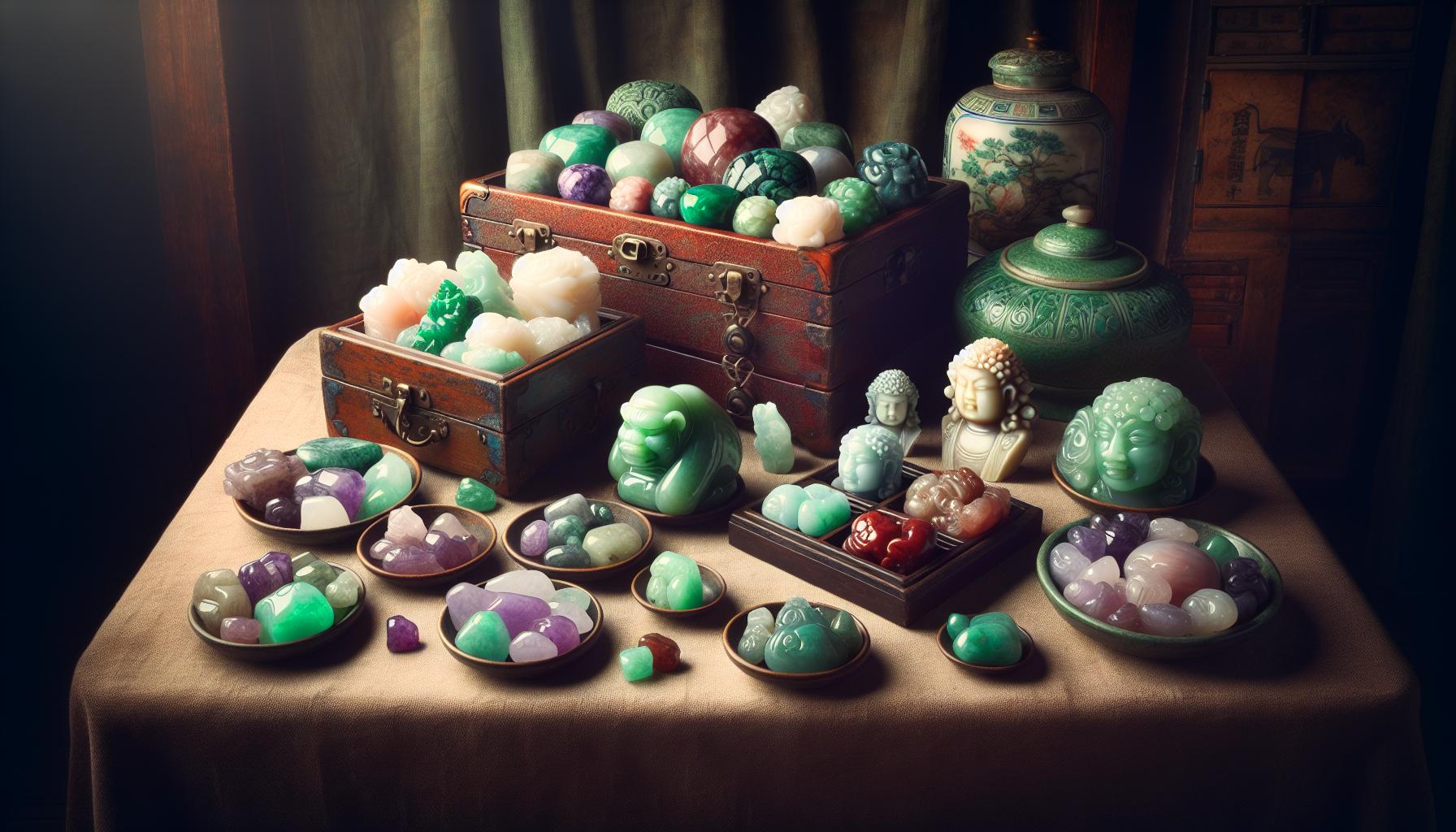
Color, Clarity, and Cut Quality
When contemplating jade’s worth, color leaps out as a primary influencer. The prized “imperial green” isn’t just a hue; it’s a marker of immense value. Yet beyond the vibrant greens, lavender, red, orange, and even white shades contribute to a piece of jade’s appeal and price.
Clarity matters as well. The more translucent a jade piece, the higher the value it’s likely to command. Inclusions or impurities impact clarity and can detract from the stone’s value if they’re too prominent. However, some collectors find beauty and uniqueness in specific inclusions, which may appeal to niche buyers.
The cut quality significantly affects jade’s allure. Fine craftsmanship can unveil the vivid depths of jade, showcasing its inherent beauty. Jade isn’t traditionally faceted like many gemstones; it’s often carved into intricate shapes or polished into smooth cabochons. These practices, reflecting tradition and culture, can amplify worth, especially when the work is executed with high precision.
Market Demand and Availability
The law of supply and demand heavily dictates jade’s worth. Market demand has soared, particularly as Asian economies gain strength and cultural interest in jade renews. When more buyers vie for a finite resource, prices inevitably climb.
Availability, or rather scarcity, plays a crucial role. High-quality jadeite, especially pieces with the sought-after “imperial green” color, is becoming harder to find. This rarity elevates prices, making such stones an investment as much as they are a fashion or decorative statement.
Certain jade deposits are famed for producing superior stones, like those in Myanmar, which yield some of the finest jadeites. The origin of a jade piece can significantly sway its price, with collectors and connoisseurs willing to pay top dollar for stones with a prestigious geographic pedigree.
Monitoring the fluctuations in jade’s market value is essential to understand the full picture of what you might expect to invest or recoup upon selling. Remember that jade’s worth is not static; it’s a vibrant, fluctuating entity shaped by numerous environmental, economic, and cultural factors. Keep an eye on market trends to stay informed about the latest shifts in jade pricing.
Understanding Jade: A Rare Gem
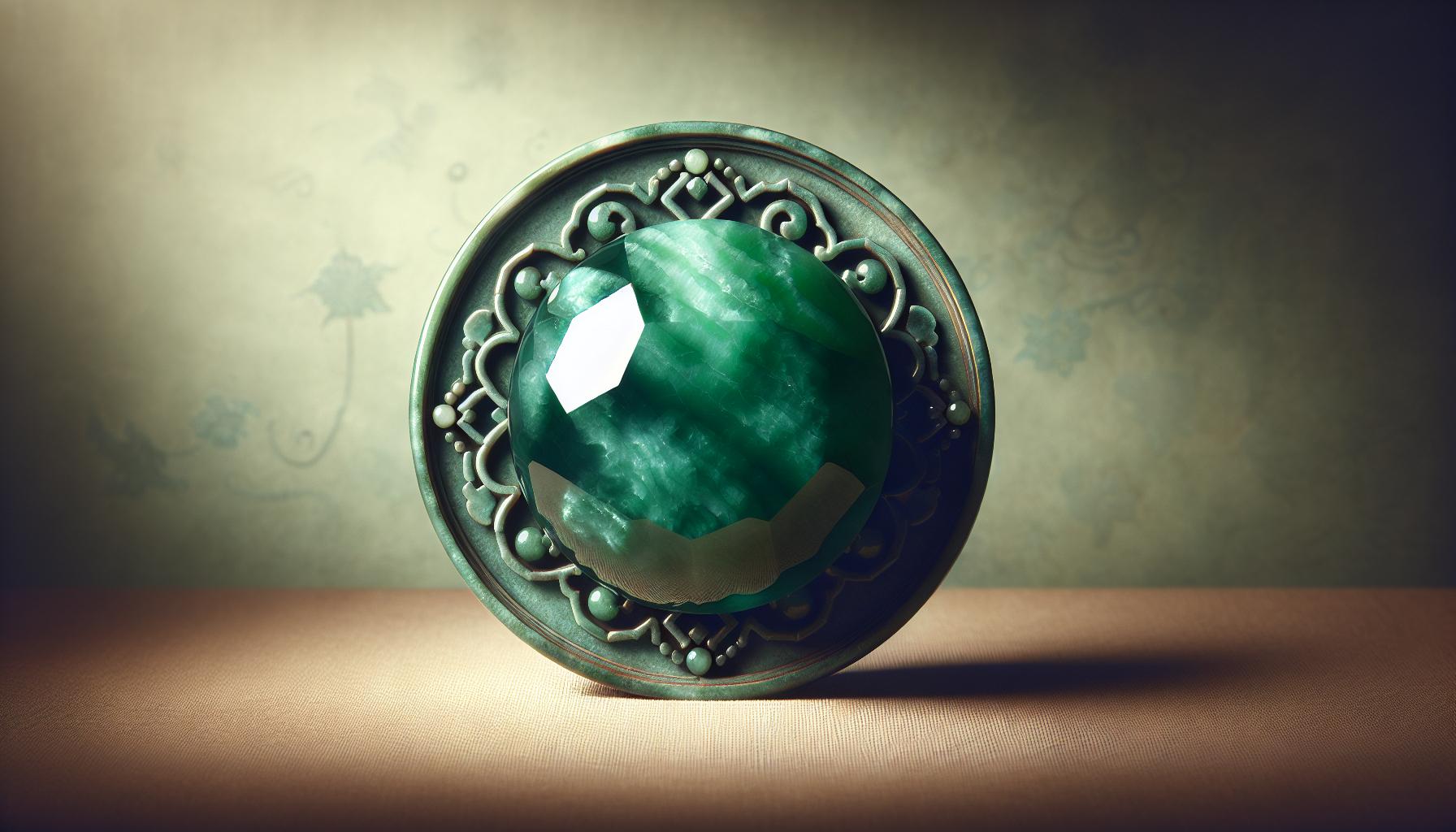
The Rarity of Jade
When you’re considering the value of jade, you can’t overlook its rarity. True jade can either be nephrite or jadeite, with jadeite being the rarer and more valued of the two. Historically revered in Asian culture, its scarcity has only increased its worth. The finest quality jadeite, known as “Imperial Jade,” is exceptionally rare and sought after, primarily found in Myanmar (formerly Burma). This scarcity is amplified by limitations on mining and exporting, making high-quality jade even more precious.
The rarity of a gemstone is directly linked to its value; therefore, pieces of jade without any enhancements or treatments are especially valuable. As deposits deplete, and the markets for natural jade expand, you can anticipate the prices for this rare gem to further escalate.
Origins and Characteristics
Jade’s allure isn’t just about its rarity; it’s also about where it comes from and its inherent qualities. Jadeite and nephrite have different geographical origins, chemical compositions, and physical properties. Jadeite chiefly comes from Myanmar, but you can also find deposits in Japan, Russia, and California. Nephrite deposits are more widespread, found in locations including China, Russia, and New Zealand.
You’ll notice that jade possesses a smooth and almost waxy luster when polished. Its color spectrum ranges widely from whites and pale greens to more vibrantly intense greens, and even blues, reds, and blacks. The most valuable color is the rich emerald green of Imperial Jade, admired for its deep yet vivid tones. The hardness of jade varies too, with jadeite being sturdier than nephrite, making it suitable for intricate carvings and high-wear jewelry.
Jade’s identity is strongly related to its cultural significance and fascinating origins. Understanding these aspects will better prepare you to appreciate its complexities and nuances when assessing worth. Keep in mind the variables that go beyond simple aesthetics, such as translucency and texture, which both contribute significantly to a piece of jade’s overall value.
Jade Grading and Valuation
The Grading System for Jade
When you’re delving into the world of jade, understanding its grading system is crucial. Jade’s value is significantly influenced by its color, transparency, texture, and cut. Renowned for its depth of color, the most prized jade is that which exhibits a deep, vivid, and uniform green. This rarity is often referred to as “Imperial Jade,” a grade that sits atop the valuation scale.
To gauge a piece of jade, experts assess its translucency and clarity. High-quality jade should be semi-transparent, with a fine texture that’s free of any blemishes or imperfections. An opaque stone with a coarse texture typically falls into a lower grade category. Carving and artistry also play a vital role; intricate designs can enhance the jade’s value.
Experts rely on a letter-based grading system to classify jade:
- Type A jade is natural and untreated, aside from surface waxing.
- Type B jade undergoes a process of bleaching and impregnation with polymers to enhance its appearance.
- Type C jade is dyed to improve or alter its color.
Type A jade is, without a doubt, the most valuable and desirable among collectors and connoisseurs. It’s essential to be aware that treatments impacting the integrity of a jade piece can significantly reduce its value.
Certification and Appraisal
As you look into purchasing jade, make sure you seek jade that comes with a reputable certification. This documentation should be from a recognized gemological institute, affirming the authenticity and type of the jade you’re buying. A certificate typically includes the jade’s weight, shape, color, translucency, and texture, along with any treatments it may have undergone.
The appraisal process is another critical aspect of determining jade’s value. Only a qualified gemologist should perform an appraisal, taking into account the current market demand, rarity, and the grading of the particular jade piece you own or are interested in acquiring.
Here are some factors included in an official appraisal:
- Provenance of the jade
- Historical significance
- Overall quality and condition
- Market trends and comparables
Market value can fluctuate, so it’s in your best interest to have your jade reappraised every few years. With accurate certification and appraisal, you’ll gain a clearer understanding of your jade’s true worth and protect your investment. Remember, in the world of jade, nuances make all the difference, and expert insight is invaluable.
Current Market Trends in Jade Pricing
When you’re trying to understand jade’s current value, you’ll want to keep your finger on the pulse of market trends. Recently, the demand for high-quality jade items has surged, primarily driven by increasing wealth in Asian markets. Traditional beliefs and the rising popularity of Eastern culture in the West have also amplified interest in this ancient stone.
The prices of jade can fluctuate based on economic conditions and collectors’ interests. As of now, here’s a snapshot of the prevailing trends affecting jade pricing:
- Imperial Jade: This top-tier jade remains exceedingly sought-after, with prices reaching well into the thousands per carat.
- Vintage and Antique Pieces: Items with a rich history or part of a collection previously owned by notable figures fetch higher prices.
- Contemporary Designs: Modern cuts and settings can appeal to younger buyers, potentially increasing value.
- Jadeite vs. Nephrite: Jadeite, rarer and traditionally more valuable, is often priced significantly higher than nephrite.
To give you a clearer picture, take a look at this table summarizing recent price ranges for different types of jade:
| Jade Type | Price Range per Carat ($) | Note |
|---|---|---|
| Imperial Jadeite | 1,000 – 20,000+ | Highly translucent |
| Lavender Jadeite | 10 – 1,000 | Popular color |
| Nephrite | 5 – 150 | More common variety |
Remember that these prices represent a broad scale, and individual pieces may sell for more or less, depending on specific qualities and the buyer’s personal valuation. Additionally, economic factors like exchange rates can impact the international jade market, influencing prices globally.
It’s also important to note that the jade market is subject to trends in fashion and design. Pieces that incorporate jade in innovative or stylistically relevant ways may see a bump in value. Conversely, items that fall out of favor with fashion trends might experience a temporary dip in demand.
Keeping tabs on auction results, dealer prices, and industry publications will help you stay updated on the jade market’s fluctuations. If you’re looking to invest, it’s wise to consult with experts who have a keen eye for shifts in this niche market.
The Most Expensive Jade
In the echelons of luxury and opulence, Imperial Jade stands as the crown jewel. Hailing from Myanmar, this top-tier jadeite’s vibrant emerald green color and extraordinary transparency set it apart. It’s not just a symbol of wealth but also an icon of refined taste. Auction houses frequently see such pieces surpass expectations, fetching prices that soar into the millions, solidifying their status as some of the most sought-after gemstones on the planet.
Historically, record-breaking sales have often made headlines. For instance, the “Doubly Fortunate” necklace of 27 graduated jadeite beads fetched a staggering $27.44 million at a Sotheby’s auction in Hong Kong. Meanwhile, a jadeite bangle bracelet once sold for over $7 million, shattering previous sales records. In these sales, you’ll notice it’s not just the quality of jade driving the price but the provenance, the skill of the craftsmanship, and the unique history of each piece.
Imperial Jade stands at the pinnacle—but what makes a piece of jade qualify as one of the most expensive? Let’s break down the factors:
- Color and Translucence: The most vibrant, even shades of green with high translucence command the highest prices.
- Texture and Clarity: A fine, smooth texture and minimal impurities or cracks increase value significantly.
- Size and Cut: Larger pieces are rarer and thus more valuable, while expert cutting to enhance natural beauty can boost prices.
Luxury collectors remain willing to invest hefty sums in these breathtaking items, and the market trends suggest that the ceiling for the value of high-quality jade might still be expanding. You might wonder if your own jade piece could fetch a heavy price tag. Well, it’s essential to stay updated with market fluctuations and seek evaluations from experts to understand its potential worth.
Diving deeper into the intricacies of jade pricing, let’s explore what drives the valuation of these exquisite gemstones even further.
Buying Jade: Tips and Recommendations
Where to Purchase High-Quality Jade
When you’re in the market for jade, knowing where to shop is critical. Specialist jewelers and reputable dealers with expertise in precious stones are your best bet for finding high-quality jade. These professionals have the knowledge to provide valuable insights about the quality of jade you’re interested in.
Here’s where you can look:
- Local jewelry stores known for their gemstone collections often carry a selection of jade items.
- Gem and mineral shows are excellent for accessing a wider variety of jade and getting in touch directly with the suppliers.
- Online marketplaces can offer convenience and variety, but they require extra caution to avoid counterfeits.
- Auctions are a common venue for high-end jade pieces, although they can be intimidating for first-time buyers.
Remember, the best place to purchase jade is where you have access to a wide selection, professional guidance, and can verify the quality first-hand before buying.
Ensuring Authenticity and Value
The authenticity of jade is paramount if you wish to make a worthwhile investment. It’s essential to know how to ensure you’re getting what you pay for.
Here’s what you’ve got to check:
- Certification: Always ask for a gemstone certificate from a reputable lab. This document should confirm the jade’s authenticity and provide details about its grade and origin.
- Expert appraisal: Before making a significant investment, consider hiring an independent gemologist or appraiser to examine the jade.
- Physical examination: Use a jeweler’s loupe to inspect the jade for imperfections or treatments.
- Background research: Study the seller’s reputation and read reviews from previous customers.
Being diligent about these factors will not only protect your investment but will also give you peace of mind knowing that your jade is genuine and holds its proclaimed value. Remember, when it comes to purchasing jade, thoroughness is key.
Conclusion: Buying & Selling Jade
You’ve seen that jade’s value is a complex interplay of quality, rarity, and cultural significance.
Remember, when you’re ready to add this precious stone to your collection, doing your homework pays off. Trust in specialists and get that all-important certification to ensure you’re making a wise investment.
Your diligence in the hunt for the perfect piece of jade not only secures its authenticity but also deepens your appreciation for this ancient gemstone’s unique beauty and worth.

